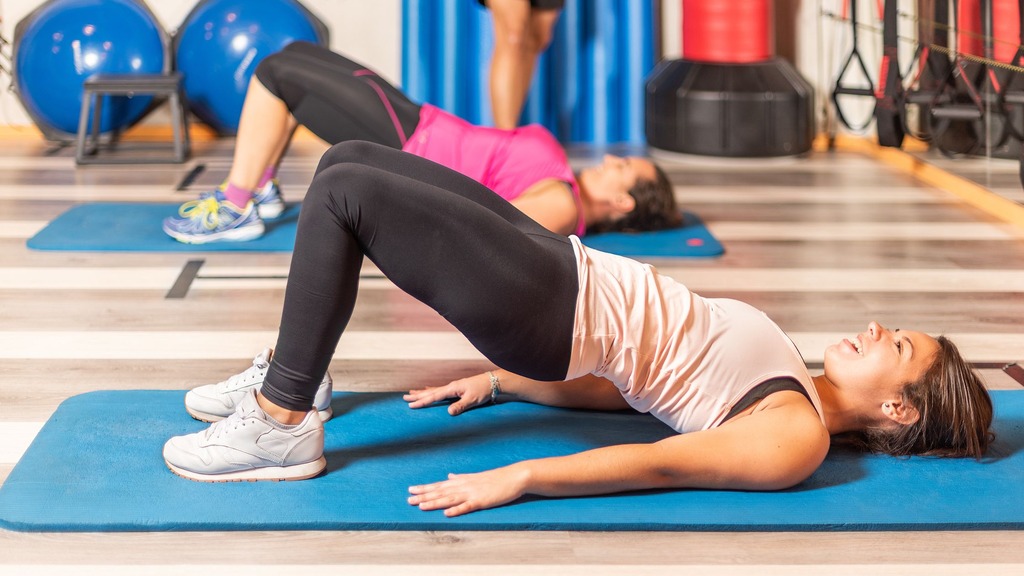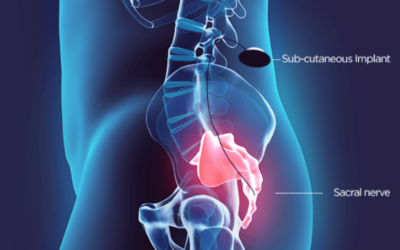Pelvic Floor Strengthening and what you need to know to get started.
If you have bladder leaking and have started looking for a cure, you’ve surely been told to strengthen your pelvic floor. It is the first thing recommended for stress urinary incontinence, urgency urinary incontinence, and mixed urinary incontinence- the big three reasons women leak. But actually doing this work- figuring out a way to strengthen your pelvic floor, is confusing to many women. You can’t see the muscles. It is hard to measure your own strength or to tell if you are getting better. There is lots of conflicting advice out there, and how do you know who to listen to? So, let’s cut through the mystery and talk about what we know about pelvic floor strengthening.
Pelvic floor strengthening with an expert works
There’s been lots of research looking at pelvic floor strengthening with a pelvic floor physical therapist or expert nurse practitioner. And it has been shown to work. About 70% of women will significantly improve or cure for their bladder leaking. That is a pretty dramatic improvement! And, when you consider there aren’t really any risks (besides possible expense and time) to doing these exercises, it is well worth the effort.
There are lots of pelvic floor physical therapists on social media who are really vocal about pelvic floor physical therapy. This is great because it raises awareness, and that helps all of us. But they also make you think that physical therapy is the only way to strengthen the pelvic floor, which isn’t true.
The truth there are other ways you can strengthen the pelvic floor. Even if everyone wanted to go to physical therapy, there aren’t enough physical therapists to handle the volume. Physical therapy can be expensive and time intensive. Not all women have the time or cash to go, even if there are open appointments. And some women don’t like the idea of pelvic floor physical therapy. It may feel too invasive or just too weird. And it usually involves feeling the muscles to make sure they are getting stronger (if you are ready for this). While I love physical therapy, I know if someone doesn’t want to go, this intervention won’t work. You have to be committed to physical therapy and put in a lot of effort for it to work. If you need help finding a pelvic floor physical therapist near you, you can use this provider finder https://www.voicesforpfd.org/find-a-provider/
Strengthening on your own works
There’s been research focused on strengthening on your own. This is essentially doing Kegel exercises. And while many PTs think this is a horrible idea, it too has been shown to work. But it only works if
- You can contract and relax your pelvic floor correctly
- You do the exercises and keep doing them
Lots of women don’t do these exercises correctly. So, if you go this route, you need to make sure you are doing them correctly. The easiest way to do this is to check with your gynecologist or a pelvic floor physical therapist. And these exercises have been shown to work if you do them for 12 weeks, which is a long time.
When we instruct women to do Kegels, we recommend squeezing the muscles for 3 seconds and then relaxing for three seconds. Each week you should extend the squeeze and relation stage by 1 second until you hit a 10-second contraction and 10-second relation. This should be repeated ten times and three sets should be done daily. We recommend starting in a lying position and then progressing to doing them in a seated position and then standing. This makes it more difficult. (for more instruction, see https://www.voicesforpfd.org/assets/2/6/Bladder_Training.pdf ).
Doing exercises on your own is hard.
You have to remind yourself to do them. To make yourself accountable and keep doing the exercises, even when you do not see a benefit. Strength improves before bladder symptoms improve, and you have to push through this stage until you see the results you want. And this is hard. You have to think about what motivates you and keep at it. This is one of the reasons that PT is successful Checking in with someone, usually weekly, keeps you accountable. A PT will also help you troubleshoot if you are having problems. Plus they will give you varied exercises that keep it more interesting. And if you are having other muscle issues (like tightness in your hip flexors or back muscles), they can also address this. These neighboring muscles can have a dramatic effect on the pelvic floor.
Using “mobile devices” also improves pelvic floor strength
There is a huge market out there for incontinence products. I feel like I see new devices every day. And while that is a little bit of an exaggeration, there is a lot out there. Each device is highly marketed with lots of promises and amazing pictures. But do they work? Is one better than the other? How do you pick a device that works for you?
There are different types of devices out there.
Peri-trainers
Peri-trainers have a vaginal insert that measures your contraction strength (and can tell you if you are relaxing correctly). The peri-trainer usually has an associated app that will give you exercise routines, tell you how well you are contracting, and measure your strength improvement. This can help with motivation and accountability- who doesn’t love to see themselves getting better? Each peri-trainer has a unique vaginal insert, and one might be more comfortable for you than another.
There are other devices that will contract the muscle for you.
Yep, you read that correctly. They do the work for you. The muscle can be stimulated in different ways- either mechanically, with an electrical stimulation, or with a magnetic wave. Don’t worry about the physics behind this- there isn’t a test- you just need to know that there are ways to stimulate the muscle WITHOUT any effort on your part. And the benefit of this type of device is that there usually is no vaginal insert. This appeals to many women.
These devices have found many creative solutions. There are shorts you can wear or a chair you can sit on.. And, there is a pad you can use. (see this blog for more details https://thewomensbladderdoctor.com/do-pelvic-floor-trainer-devices-or-peri-trainers-really-work/).
These devices are much more expensive than peri-trainers (2-5 times more expensive). And there isn’t much data on long-term benefits. Does it keep working? Do you need maintenance sessions to keep it working? We just don’t know. And I think many of these devices over-promise. I usually fall into the camp of- if it sounds too good to be true, it probably is. Devices that promise a lifetime cure after six weeks of muscle strengthening are fibbing. There isn’t the data to support this and that isn’t really how muscle strengthening works.
There is some data to show that if you do muscle strengthening on your own, you can improve the reflexive activity of the muscles.
This means that the muscles work better when you aren’t deliberately contracting them- your pelvic floor does a lot of work on its own. And that is really what you wan. You want those muscles to contract really strongly before a cough to keep you dry. You may also learn to use those muscles better and “brace” before a jump- once you learn to use them in this way, you are strengthening the muscles without thinking about it. And that can maintain your strength. I think this is likely one of the problems with these alternate devices. You aren’t learning about your muscles and relearning how to use them.
Strengthen the way that works for you
Take a minute to think about what you want. If you want an expert guide, go to pelvic floor physical therapy. But, if you want to do it all on your own, make sure you are contracting correctly and do it. Come up with a reward system and do something nice for yourself if you have consistently done the exercises. I know I’m more likely to stick with something if I get a little prize- this is how we are all wired. And if you like the idea of a device, peri-trainer or other, do it. Just remember that one has not been shown to be better than another- you don’t have to pick the most expensive device.
I’m pretty passionate about teaching women about the pelvic floor and how to improve their leaking. I just created a masterclass on picking the best way to strengthen your pelvic floor. This class is in the courses section of my website. Go ahead and look for it there if you need more help picking a method to strengthen your pelvic floor. Kegel on my friends!

JF Pennycuff Obstet Gynecol 2022
C Dumoulin Cochrane Database Syst Rev 2018






0 Comments